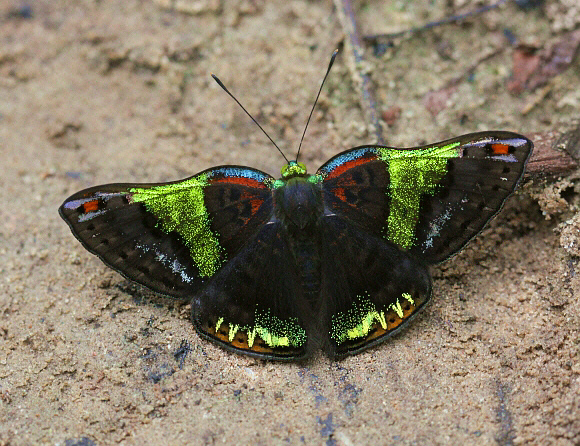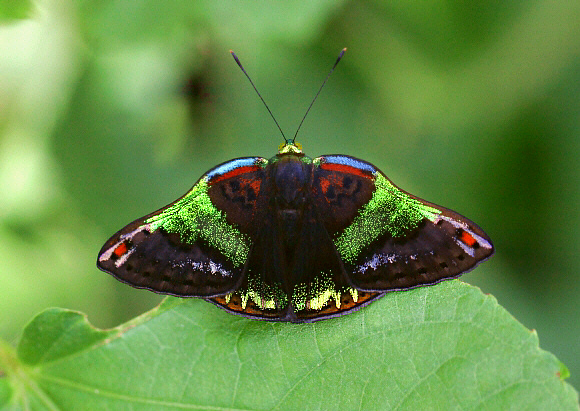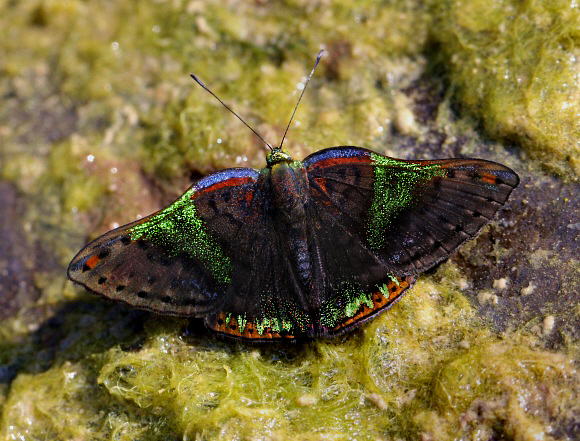 Caria trochilus, Rio Pindayo, Peru – Adrian Hoskins
Caria trochilus, Rio Pindayo, Peru – Adrian Hoskins
Introduction
The genus Caria contains some of the most beautiful and elusive species on Earth. Although fairly common they are rarely seen due to their secretive habits, and are virtually impossible to follow in flight. Once seen these glittering jewels of the Amazon are never forgotten.
Lepidopterists often feel quite overwhelmed by the beauty of these butterflies, but initial feelings of ecstasy are soon replaced by the rapid onset of frustration, anguish, despair and an uncontrollable urge to spend the next 2 hours hawking relentlessly in the vicinity of the sighting, peering into bushes, crawling about on the ground and searching every nook and cranny, while muttering and pleading with the butterfly to reveal itself !
There are 14 species in the genus Caria, 5 of which are restricted to Central America, while the others including mantinea and sponsa are found primarily in Amazonia and the foothills of the eastern Andes.
Several of the species including mantinea, plutargus, castalia and smaragdina are almost identical on the upperside. Caria trochilus is much darker than these, with an almost black ground colour. It could possibly be confused with rhacotis as both have metallic blue scales at the base of the costa. Caria rhacotis however, in addition to having a paler ground colour, has more extensive red scaling at the base of the forewings, and has a thin silver submarginal line on fore and hind wings.
Habitats
This species is found in primary rainforest at altitudes between about 200-800m, often in the vicinity of rocky or pebble-strewn streams.
Lifecycle
I have no data regarding trochilus but the lifecycle is likely to be very similar to that of other Caria species as follows: The eggs are laid singly under the leaves of Ulmaceae or Bromeliaceae. The caterpillars are densely hairy, and live and feed within rolled leaf tubes.
 Caria trochilus, freshly emerged male, Rio Pindayo, Peru – Adrian Hoskins
Caria trochilus, freshly emerged male, Rio Pindayo, Peru – Adrian Hoskins
Adult behaviour
The adults probably spend much of their time in the canopy, but males often descend on hot sunny mornings at which time they can, with luck, be seen imbibing moisture from sandbanks, peccary wallows, or from the beds of dry streams.
They have a rapid and erratic flight which is virtually impossible to follow with the eye. However with practice it is often possible to relocate them once they resettle, as they tend to only cover quite short distances. Usually they settle on the ground, but sometimes they land on foliage, or on a damp sunlit rock or boulder.
The butterflies usually bask with the forewings swept back, half covering the hindwings.

Caria trochilus, Satipo, Peru – Adrian Hoskins
